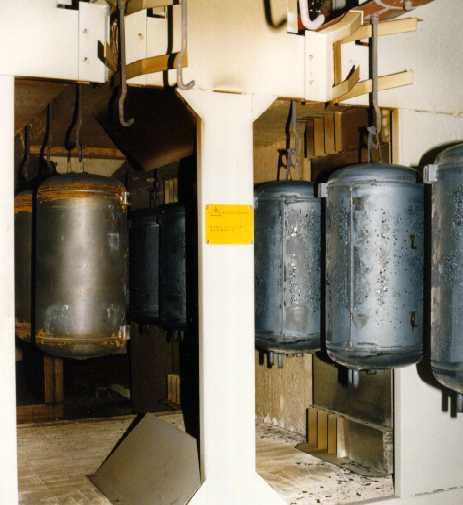
Hot water tanks, which are typically used for (solar) boilers, may be manufactured from either stainless steel, copper or mild steel. The selection of the appropriate substrate depends on many factors, such as the annual production volume, the average dimensions of the tanks, expected water quality, desired product life and raw material cost.
Due to the ongoing price increases of stainless steel & copper, there is nowadays a worldwide trend towards manufacturing hot water tanks from mild steel. HWT's made of mild steel need to be coated internally, either with zinc, powder coating, nylon or enamel to protect it against corrosion.
According to a publication by the CISP, in which the various corrosion protection methods were compared, porcelain enamel provide the best protection (read longest life) against corrosion by boiling water. Porcelain enamel is a glass-alike coating, which needs to be applied on a clean substrate surface and then fired inside a high temperature furnace.
In the past the porcelain enamel layer was typically applied in a wet form, either by flow coating or air spraying. However, thanks to technological developments it is also possible to apply the enamel by means of electrostatic dry spraying, which application method has many operational benefits, such as :
-
Shorter lead time and less process steps, thanks to elimination of enamel preparation and drying.
-
Almost 100 % material utilization, thanks to automatic recovery of any over-spray powders.
-
Environmental friendly, because there are no air, waste water or solid waste emissions.
Simple systems with high level of automation helps to reduce your labor cost and guarantee a good and constant finishing quality.
Powder enamel systems require less factory space then all equipment for wet enamel process.
To achieve maximum protection from your enamel coating, it is important that the tank design and steel grade are suitable for the selected enameling process and comply with the international standards, such as DIN 4753-3.
A modern enameling plant has only three process stages. (shotblasting, application, firing) Depending upon the local labour cost & hourly production capacity, the various machines may be integrated by means of one or more overhead conveyor systems.
The size and layout of a boiler enameling plant depends mainly upon the selected enameling process, the desired hourly production capacity, the maximum tank dimensions and the level of integration between the various machines.
Thanks to many years of experience with porcelain enameling projects worldwide, Ditmer Trading & Consulting BV may provide you all necessary process & equipment know-how and practical support during all stages of your boiler enameling plant project. Please contact us in order to discuss any requirements and/or questions you may have.Click here for a summary of our services.

